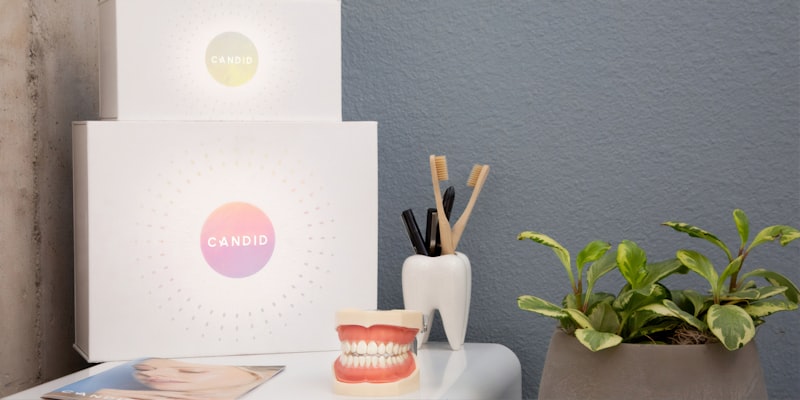Have you ever wondered if chewing gum really stays in your stomach for seven years if swallowed? Just like this myth, there are numerous misconceptions about dental health that often circulate without question. Let’s dive into some of the most common dental myths and uncover the truth behind them.
One prevalent myth is that sugar is the sole culprit behind tooth decay. While sugar certainly plays a role, it’s not the only factor. Tooth decay results from a combination of factors including bacteria in the mouth, poor oral hygiene, and frequent snacking on sugary foods. Brushing and flossing regularly are crucial in preventing decay, alongside reducing sugar intake.
Another myth that often causes concern is the idea that brushing harder equals cleaner teeth. In reality, brushing too vigorously can damage tooth enamel and gums, leading to sensitivity and other oral health issues. Dentists recommend using a soft-bristled toothbrush and gentle, circular motions to effectively remove plaque without causing harm.
Many people believe that if their gums bleed while brushing or flossing, they should avoid these activities. On the contrary, bleeding gums are often a sign of early gum disease (gingivitis), caused by inadequate plaque removal. Regular brushing and flossing help reverse gingivitis and prevent its progression to more severe forms of gum disease.

Lastly, some individuals believe that they don’t need to visit the dentist unless they experience pain or discomfort. Routine dental check-ups are essential for maintaining oral health and catching problems early. Dentists can identify issues like cavities, gum disease, and oral cancer in their initial stages, making treatment more effective and less invasive.
By debunking these common myths and embracing accurate oral health practices, you can ensure a healthy smile for years to come. Remember, dental care is not just about brushing and flossing; it’s about understanding and applying proper oral hygiene techniques based on factual information.
Revealing the Truth: Debunking 7 Common Dental Myths
Ever wondered if cracking your knuckles or chewing ice could harm your teeth? Dental myths have been around forever, and it’s time to separate fact from fiction. Let’s dive into debunking some of the most common dental myths that might surprise you.
Many believe that vigorous brushing leads to cleaner teeth. However, dentists advise against this. Brushing too hard can erode enamel and damage gums over time. The key is gentle but thorough brushing twice a day.
While sugar does contribute to tooth decay, it’s not the only culprit. Starchy foods like chips and bread can also break down into sugars and lead to cavities if left on teeth. Proper brushing and flossing are essential regardless of diet.
Some think baby teeth don’t matter because they eventually fall out. In reality, baby teeth hold space for permanent teeth and are crucial for proper speech development and chewing.
Having white teeth doesn’t necessarily mean they’re healthy. Tooth color can vary based on genetics and diet. Regular dental check-ups ensure teeth are healthy beyond their appearance.
Chewing ice might seem harmless, but it can actually chip or crack teeth. It’s best to enjoy ice-cold drinks without chewing on the ice cubes.
- Myth: You Shouldn’t Visit the Dentist Unless You Have a Problem
Waiting until you have a toothache or other dental issue can lead to more extensive and expensive treatments. Regular dental visits help prevent problems and maintain oral health.
Brushing alone can’t reach the tight spaces between teeth where plaque builds up. Flossing removes plaque and debris, preventing gum disease and cavities.
Understanding these myths can help you make informed decisions about your dental health. Remember, regular brushing, flossing, and dental check-ups are key to maintaining a healthy smile.
Busting Dental Myths: Separating Fact from Fiction
Have you ever wondered if chewing gum really stays in your stomach for seven years? Or perhaps you’ve heard that brushing your teeth harder will make them cleaner? These are just a couple of examples of dental myths that have circulated for years. In this article, we’ll debunk some common misconceptions about dental health and separate fact from fiction.
Myth: Chewing gum stays in your stomach for seven years.

Fact: This is a popular myth, but it’s simply not true. Chewing gum is designed to be chewed, not swallowed. While it’s true that gum isn’t easily digested like other foods, it passes through your digestive system just like anything else you swallow.
Fact: Brushing harder can actually be harmful to your teeth and gums. Dentists recommend using a soft-bristled toothbrush and gentle brushing motions to effectively remove plaque and debris without damaging your enamel or irritating your gums.
Myth: You should avoid going to the dentist if your teeth aren’t hurting.
Fact: Regular dental check-ups are essential for maintaining good oral health. Dentists can detect early signs of dental issues like cavities, gum disease, or oral cancer, even before you experience any symptoms. Prevention and early intervention are key to avoiding more extensive and costly dental treatments later on.
Fact: While sugar does contribute to tooth decay, cavities are caused by a combination of factors including poor oral hygiene, bacteria in the mouth, and frequent snacking on sugary or starchy foods. Brushing and flossing regularly, along with reducing sugar intake, can help prevent cavities.
Myth: You don’t need to floss if you brush your teeth thoroughly.
Fact: Flossing is an essential part of oral hygiene. It helps remove plaque and food particles from between teeth and along the gumline, where your toothbrush can’t reach effectively. Skipping flossing can increase your risk of gum disease and cavities.
Myth: Baby teeth aren’t important because they eventually fall out.
Fact: Baby teeth play a crucial role in a child’s development, helping them chew properly, speak clearly, and maintain space for permanent teeth. It’s important to take good care of baby teeth to prevent decay and ensure proper alignment of permanent teeth.
It’s important to question and verify information about dental health before accepting it as fact. By busting these common dental myths, we can all make more informed decisions about our oral health and work towards healthier smiles.
Myth or Reality? The Truth Behind Common Dental Misconceptions
-
Sugar Is the Sole Culprit: It’s widely believed that sugar alone causes cavities. While sugar plays a significant role, it’s actually the interaction between bacteria in the mouth and sugars that leads to decay. Proper brushing and flossing are crucial to prevent this.
-
Whiter Teeth Are Always Healthier: While white teeth can indicate good oral hygiene, they aren’t always healthier. Teeth can be stained from coffee, tea, or smoking, even if they’re well cared for. Regular visits to the dentist can help maintain both health and brightness.
-
Brushing Harder Is Better: Many people think that vigorous brushing will clean teeth better. However, brushing too hard can wear down enamel and irritate gums, potentially leading to sensitivity and other oral issues. Gentle, thorough brushing is more effective.
-
Once You Lose a Tooth, It’s Gone Forever: Contrary to this belief, missing teeth should be replaced to maintain oral health. Dental implants and bridges are effective solutions that prevent shifting of adjacent teeth and preserve jawbone structure.
-
Baby Teeth Aren’t Important: Some may dismiss the care of baby teeth, assuming they will fall out anyway. However, baby teeth are crucial for proper chewing, speech development, and guiding permanent teeth into place. Early dental care sets the foundation for lifelong oral health.
-
Flossing Is Optional: Flossing often gets sidelined, but it’s essential for cleaning between teeth where toothbrushes can’t reach. It helps remove plaque and prevents gum disease. Dentists recommend flossing at least once a day for optimal oral hygiene.
-
Chewing Gum Substitutes Brushing: Chewing sugar-free gum after meals can stimulate saliva flow, which helps neutralize acids and wash away food particles. However, it should never replace brushing and flossing, which are crucial for thorough cleaning.
-
Bleaching Weakens Teeth: Teeth whitening, when done under dental supervision, is safe and doesn’t weaken enamel. Over-the-counter products should be used cautiously to avoid sensitivity, but professional whitening procedures are generally safe.
By debunking these common misconceptions, we empower ourselves to make informed decisions about our dental health. Remember, consulting with a dentist regularly and following a consistent oral hygiene routine are key to maintaining a healthy smile.
Unveiling Dental Myths: What You Need to Know
Are you often confused about dental care because of various myths floating around? Let’s debunk some common misconceptions to help you understand what’s true and what’s not when it comes to oral health.
It’s easy to blame sugar for cavities, but the truth is more nuanced. While sugar does play a role by feeding harmful bacteria in your mouth, it’s not the only factor. Poor oral hygiene, infrequent dental visits, and even genetics can contribute to tooth decay. Maintaining a balanced diet and practicing good oral hygiene are key to preventing cavities.
Brushing your teeth vigorously might seem effective, but it can actually damage your enamel and irritate your gums. The key to proper brushing is technique, not force. Use a soft-bristled toothbrush and gentle, circular motions to clean your teeth effectively without causing harm.
Myth: You don’t need to see a dentist if your teeth look fine.
Even if your teeth appear healthy, regular dental check-ups are crucial. Dentists can detect early signs of decay, gum disease, and other oral health issues that may not be visible to you. Prevention is always better than cure when it comes to dental care.
Flossing often gets neglected, but it’s essential for removing plaque and food particles from between your teeth where your toothbrush can’t reach. Skipping flossing can lead to cavities and gum disease over time. Make it a daily habit to ensure thorough oral hygiene.
Thanks to advancements in technology and anesthesia, dental procedures are much less painful than they used to be. Dentists strive to ensure your comfort during treatments, and many procedures are virtually pain-free.
Understanding the truth behind these dental myths can empower you to take better care of your oral health. By debunking misconceptions and adopting good dental habits, you can maintain a healthy smile for years to come.
Frequently Asked Questions
Do whitening toothpastes damage tooth enamel?
Do whitening toothpastes damage tooth enamel? Find out how whitening toothpastes work and whether they pose risks to your tooth enamel. Learn about their ingredients and potential effects on dental health.
Are silver fillings safer than composite fillings?
Learn about the safety differences between silver (amalgam) and composite fillings to make an informed decision for your dental care. Understand the materials used, potential risks, and benefits associated with each type of filling.
Can chewing gum replace brushing and flossing?
No, chewing gum cannot replace brushing and flossing. While sugar-free gum can temporarily increase saliva flow, helping to wash away food particles and neutralize acids, it does not remove plaque or prevent gum disease like brushing and flossing do. These oral hygiene practices are essential for maintaining healthy teeth and gums.
Is it true that sugar is the main cause of cavities?
Sugar contributes significantly to cavity formation because bacteria in the mouth feed on it, producing acids that erode tooth enamel. However, proper oral hygiene, including regular brushing and dental check-ups, is crucial in preventing cavities.
What are some common dental myths and misconceptions?
Discover common dental myths and misconceptions with our concise guide. Learn the truth about topics like fluoride safety, sugar’s impact on teeth, and the importance of regular check-ups. Clear up misunderstandings to maintain optimal oral health.


